
This eighth edition first published 2012
2012 John Wiley & Sons Ltd
Edition History:
Bruce Mitchell (1e, 1964 and 2e, 1968); Bruce Mitchell and Fred C. Robinson (3e, 1982;
4e, 1986; 5e, 1992; 6e, 2001; and 7e, 2007)
Wiley-Blackwell is an imprint of John Wiley & Sons, formed by the merger of Wileys global Scientific, Technical and Medical business with Blackwell Publishing.
Registered Office
John Wiley & Sons Ltd, The Atrium, Southern Gate, Chichester, West Sussex, PO19 8SQ, UK
Editorial Offices
350 Main Street, Malden, MA 02148-5020, USA
9600 Garsington Road, Oxford, OX4 2DQ, UK
The Atrium, Southern Gate, Chichester, West Sussex, PO19 8SQ, UK
For details of our global editorial offices, for customer services, and for information about how to apply for permission to reuse the copyright material in this book please see our website at www.wiley.com/wiley-blackwell.
The right of Bruce Mitchell and Fred C. Robinson to be identified as the authors has been asserted in accordance with the UK Copyright, Designs and Patents Act 1988.
All rights reserved. No part of this publication may be reproduced, stored in a retrieval system, or transmitted, in any form or by any means, electronic, mechanical, photocopying, recording or otherwise, except as permitted by the UK Copyright, Designs and Patents Act 1988, without the prior permission of the publisher.
Wiley also publishes its books in a variety of electronic formats. Some content that appears in print may not be available in electronic books.
Designations used by companies to distinguish their products are often claimed as trademarks. All brand names and product names used in this book are trade names, service marks, trademarks or registered trademarks of their respective owners. The publisher is not associated with any product or vendor mentioned in this book. This publication is designed to provide accurate and authoritative information in regard to the subject matter covered. It is sold on the understanding that the publisher is not engaged in rendering professional services. If professional advice or other expert assistance is required, the services of a competent professional should be sought.
Library of Congress Cataloging-in-Publication Data
Mitchell, Bruce, 1920-2010.
A guide to old English / Bruce Mitchell and Fred C. Robinson. 8th ed.
p. cm.
Includes bibliographical references and index.
ISBN 978-0-470-67107-8 (pbk.)
1. English language
Old English, ca. 450-1100Grammar. 2. English language Old English, ca. 450-1100Readers. 3. English philologyOld English, ca. 450-1100
Handbooks, manuals, etc. I. Robinson, Fred C. II. Title.
PE131.M5 2011
429.82421dc23
2011026041
A catalogue record for this book is available from the British Library.
This book is published in the following electronic formats: ePDFs 9781119950264; ePub 9781119950271; Mobi 9781119950288
In Memoriam
DONOVAN F. MITCHELL
AND
IRENE K. MITCHELL
Foreword to the Eighth Edition
Sadly, this is the first edition of The Guide in which Bruce Mitchell, who died in January 2010, has had no part. After Mitchells death Fred Robinson was invited by the editors of Blackwell Publishing to prepare an eighth revised edition.
In preparing this edition I have made a complete review of all parts of the book with an eye to clarifying and sharpening our phrasing and updating the contents in all discussions of both grammar and texts. In addition, two new features have been added: the first twenty-five lines of Beowulf have been introduced to the selections from that poem (text number 18), and these lines have been provided with an exceptionally detailed commentary dealing with the language, style, and content of the poem. This addition has been made in response to readers request that The Guide provide students with a full and detailed introduction to the poem that in most colleges and universities is taken up in a course following the introductory course in Old English. A second addition is Appendix F, which provides a brief but fairly comprehensive account of the First Consonant Shift (Grimms and Verners Laws) to which we make allusion in 105109 but without spelling out just what these consonant shifts were.
A special feature of The Guide ever since the First Edition has been the detailed explanation of OE syntax (139214). Occasional reference is made elsewhere in The Guide to specific passages in the discussion of syntax, and these passages should be helpful to students. But most teachers do not assign the entire fifty-odd pages on syntax to beginning students, these pages being directed to the more advanced student of OE. To the more advanced student and to Old English scholars in general the discussion of syntax can be quite useful, and so I am retaining it in this edition.
In preparing this Eighth Edition I have received valuable advice and assistance from several colleagues, including Traugott Lawler, Roberta Frank, J. R. Hall, and Theodore Leinbaugh. I am most grateful for their help. Eight anonymous readers enlisted by the publisher have also provided very helpful insights and suggestions. And, as always, I am indebted to Alfred Bammesberger for his brilliant textual studies.
Anglo-Saxon England
Abbreviations and Symbols
LANGUAGES AND DIALECTS
GRAMMATICAL TERMS
SYMBOLS
> | became |
< | came from |
* | this precedes a form which is not recorded. Usually it is a form which probably once existed and which scholars reconstruct to explain the stages in sound-changes; see 103.3. |
Sometimes it is a form which certainly never existed but which is invented to show that one sound-change preceded another. An exam-ple is ierfan in 100, note. |
over a letter denotes a long vowel or diphthong. |

| over a letter denotes a short vowel or diphthong. |

| means short and long, e.g.  in 100. in 100. |

| in 41 denote a long and short syllable respectively. |

| denote respectively a syllable carrying full, secondary, or no, stress. |
[ ] | enclose phonetic symbols. |
How to Use this Guide
This section is particularly addressed to those of you who are working without a teacher.
THE IMPORTANCE OF READING AND PARSING


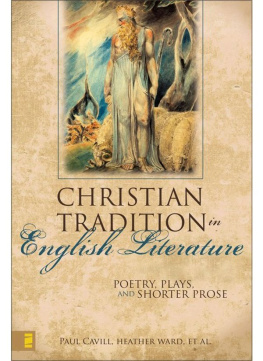


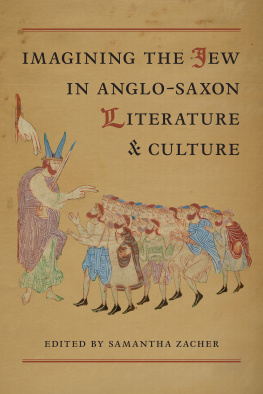
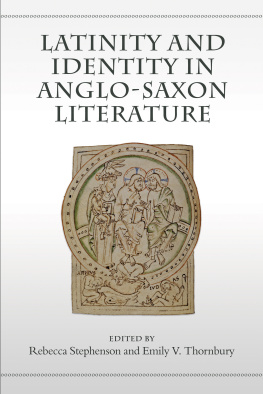

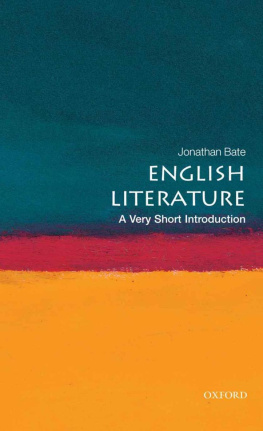
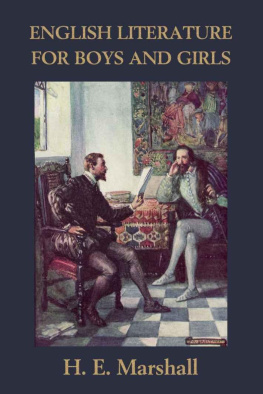


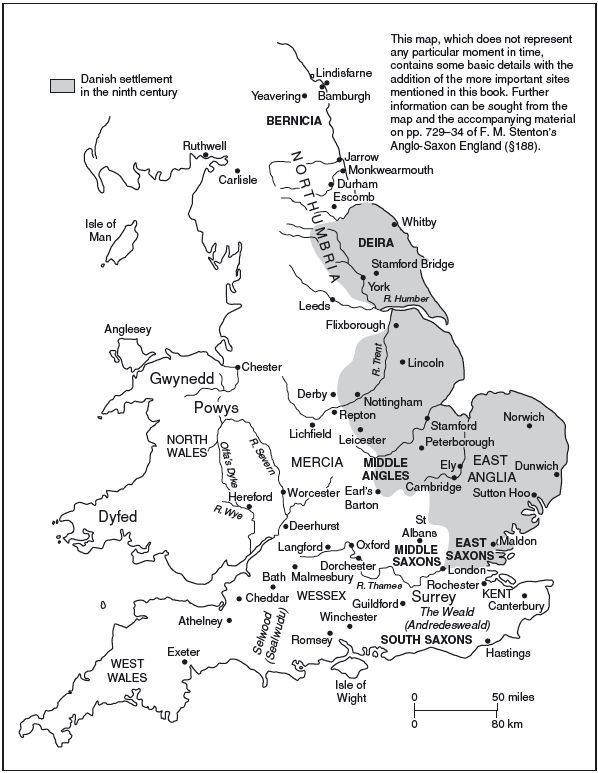

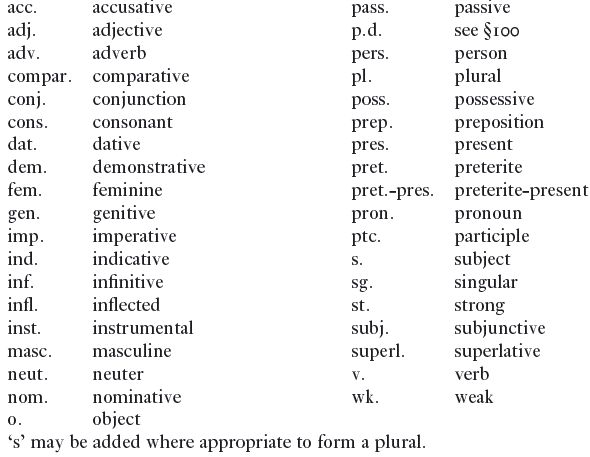


 in 100.
in 100.
